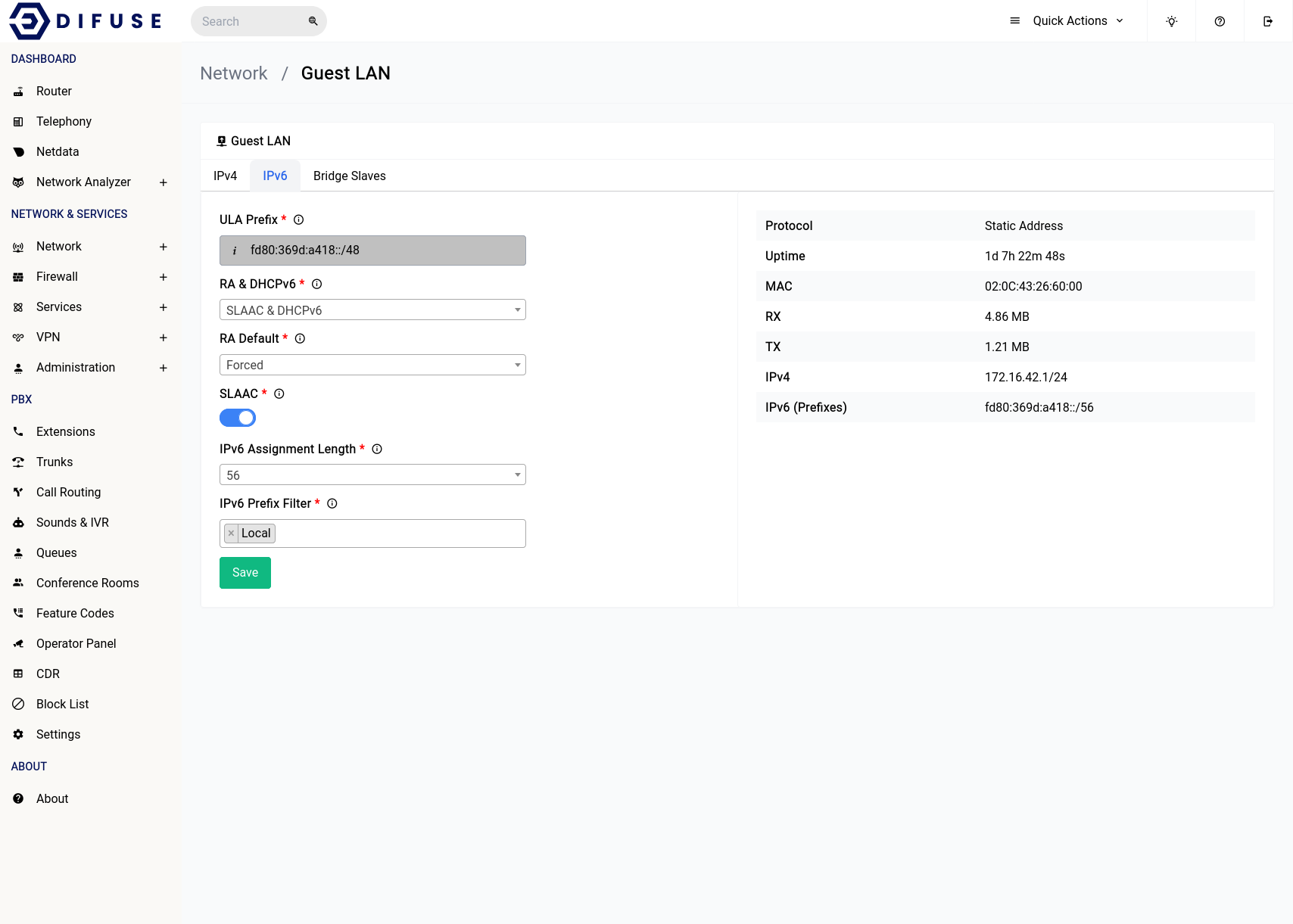This is not the latest version of this documentation, for the one that is upto date, please see the latest version (2.7.0)
IPv6 Configuration
For most setups the ULA prefix can remain unchanged as it’s randomly generated and is assigned with the right prefix length, only change it if you know what you’re doing. ULA addresses are simply addresses that are routable within the scope of private networks, it’s not globally routable.
Coming to the RA & DHCPv6 options it can be crucial to the setup of IPv6 on your device depending upon your setup layout.

Network Settings - LAN - IPv6
RA & DHCPv6
SLAAC Only
SLAAC (StateLess Address Auto Configuration), this is the ideal to let your devices on the network get IPv6 addresses on their own, they just request a prefix from the router and t he rest is all done on their end.
SLAAC and DHCPv6
Devices is like android phones/TVs dont play well with DHCPv6, but if you want to assign static addresses DHCPv6 is the way, so this option is sort of a middle ground between the two.
IPv6 Relay
This is where the IPv6 requests are forwarded to upstream, the ideal case where you're sitting behind another router that does the delegation.
IPv6 Hybrid
In this case it checks if there's something from upstream if there is none the router does it's thing.
IPv6 Assignment Length & Prefix Length
This is really important as your ISP may not hand out anything more than a /64 subnet, in which case you need to select that here. You can also try selecting /56 or /48 to try if they'll give you a subnet of that size, you can also just delegate the ULA prefix and choose any prefix for your network in that case.

